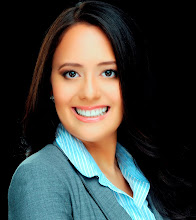 |
|
|
As we can see in the graphic above, public sector’s changing workforce rate will continue to hasten in the upcoming years. As Berman et al (2010) indicate there are three age groups that are actively involved in the job market which are the Baby Boomers (those born before 1960), Generation X (those born between 1960 and 1980) and the New Millennials (those born after 1980). The New era for public sector management have to develop new strategies to engage this convergence of different generational groups that are combined with an increase of many ethnic, cultural and religious subgroups. According to Starks (2011), it is anticipated that up to 50% of many government organizations’ workers will be qualified to retire in the next 10 years (Starks, 2011). Public managers will have to prepare for this subsequent mass retirement of this group of workers. It is imperative that organizations follow a strategic plan to hire very skilled and trained employees to take over these vacated positions. As mention in "GovCloud: the future of government work” report developed by Deloitte, forty years ago, more than 50 percent of employed American adults worked in either blue-collar or clerical jobs. Nowadays, less than 40 percent work in these same types of professions. Moreover, jobs demanding repetitive tasks are disappearing, while those requiring advance communication skills and specialized thinking are becoming the standard. Gradually, organizations would seek for employees that contribute with knowledge-based analysis and innovative ideas. As Starks (2011) remarks, there is an excited group of Millennials that are just starting to move into the public service workforce and they wish to occupy those soon to be freed positions in public organizations. Many participants of the Generation X group have been working towards their academic and career qualifications to ultimately transition into those tasks that the boomers are expected to leave. In order for public sector organizations to successfully deal with all of these vicissitudes, human resources managers will need to take part in a more assertive method of strategic human capital management than in the past (Starks, 2011). Selden refers as Strategic human capital planning to the process of evaluating an agency’s workforce requirements and human capital management structures to accomplish its goals and overcome challenges of the changing workforce. Its intention is to allow public organizations to hire, retain, train, develop, recognize and reward public employees that support their strategic goals (Selden, 2009). Human capital management combined with applicable workforce planning will help expand an agency’s practices of recognizing the types of applicants that an agency needs presently and foreseeable future. As many authors besides Berman et al mention, government agencies should dynamically recruit new employees while training current public servants to take on leadership positions available in the upcoming years. Another aspect that Starks (2011) explains, it is succession planning which is an integral step to prevent losing particular skills owned by future retirees. Currently, human capital management suggestions have also been made to help reformed the rigid merit systems in several public organizations which interrupt progress within an agency; therefore, it defers innovation and productivity. Many government agencies are seeking new ways to encourage their young workers particularly Millennials who aren't as patient and reliable as baby boomers. As we can see in the graphic below, there are differences in values among generations.
As shown above, millennials are looking for recognition and fulfillment. For instance, there are many opportunities that are being offered such as social media outreach programs, loan repayment programs, mentorships with senior officials, and other career development opportunities to attract and satisfy this group (Pasieka, 2009). For this reason, public sector HR managers should come up with incentives for millennials to apply for public sector jobs in order to stay competitive with the private sector. In my opinion, government organizations should concentrate their efforts in expanding their career development approaches for its existing employees and also to potential qualified candidates.
References:
Berman, E., Bowman, J.,
West, J., & Van Wart, M. (2010).
Human Resource Management in Public Service Paradoxes, Processes, and Problems.
3rd ed., pp. 5-10. Thousand Oaks, California: Sage Publications, Inc.
Deloitte Consulting LLP.2012. GovCloud: the future of government work
Pasieka, S. (2009). Exploring the
changing workforce: Understanding and managing the generation of millenial
workers. (Doctoral dissertation).
Selden, S. (2009). Human Capital Tools and Strategies for the Public sector. PP. 13-32. Washington, DC: CQ Press.
Starks, A. (2011). Linking
multigenerational workplace dynamics to knowledge transfer utility in the
federal government sector. (Doctoral
dissertation).


